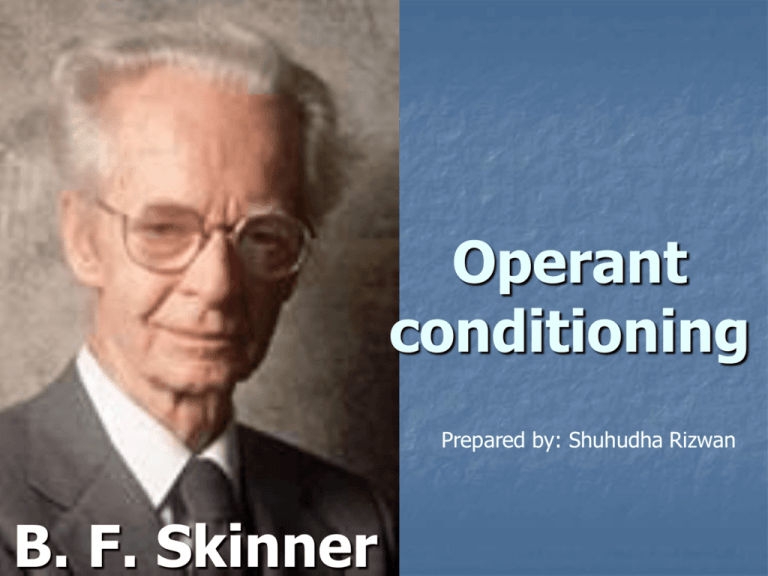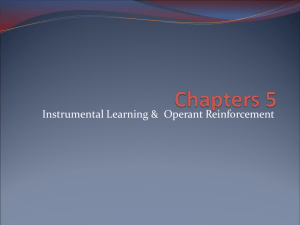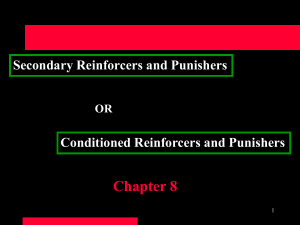Operant conditioning
advertisement

Operant conditioning Prepared by: Shuhudha Rizwan B. F. Skinner Operant Conditioning The use of pleasant or unpleasant consequences to control the occurrence of behaviour Why do we need to reinforce behaviour? To strengthen that behaviour Why do we need to punish behaviour? To weaken that behaviour What is a reinforcer? 1. - 2. - A pleasurable consequence that maintains or increases a behaviour. Primary reinforcers Consequences that satisfy a basic needs. E.g. Food, water Secondary reinforcers Consequences that people learn to value through its association with a primary reinforcer. E.g. stars, badges. What is a punisher? 1. - 2. - An unpleasurable consequence that weakens or stops behaviour. Type 1 punishment (presentation punishment) An unpleasant consequence that a person tries to avoid from. E.g. scolding, beating, kneeling down Type 2 punishment (removal punishment) Withdrawal of a pleasant consequence. E.g. not allowing a student to play football. Reinforcement or punishment? Added to the situation Removed from the situation Strengthen behaviour Positive reinforcement Negative reinforcement weaken behaviour Type 1 punishment Type 2 punishment Time out The procedure of removing a student from a situation in which misbehaviour is was being reinforced. Practical Reinforcers 1. 2. 3. 4. 5. 6. 7. 8. 9. Self-reinforcement Praise Attention Grades and recognition Home-based reinforcement Privileges Activity reinforcers Tangible reinforcers Food LIMITATIONS OF REINFORCEMENT It is difficult to identify rewards and punishments You must control all sources of reinforcement Internal changes can be difficult to create Students may come to hate teachers who use punishment Punishing is difficult to do well Effective punishment must be 1) immediate (right now!) 2) intense (the biggest possible stick) 3) unavoidable (there is no escape) 4) consistent (every time)







